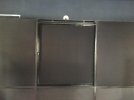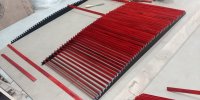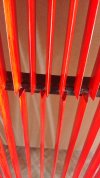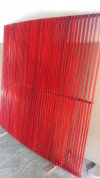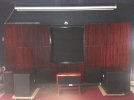liverpool_for_life
Well-Known Member
Try 8 inch absorbers on front wall.
Of course space permitting..
Front wall first, yes. Unfortunately, space isn't permitting
Only 9 inches clearance from the front wall to where the screen drops down. And we need a panel to house the absorbent material. So, 6 inches is what's left for the absorber. It isn't too bad. It's what my speaker designer recommended as well.





